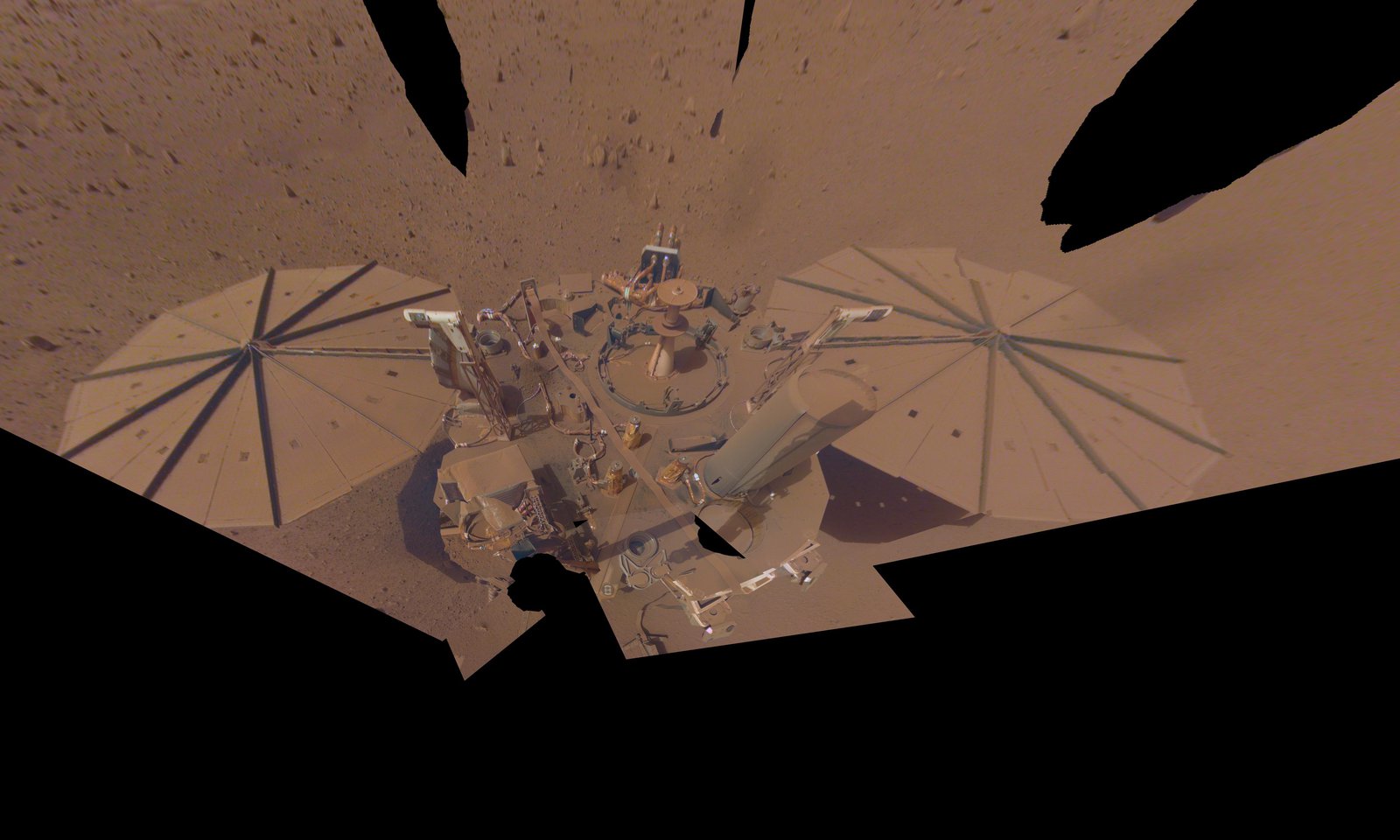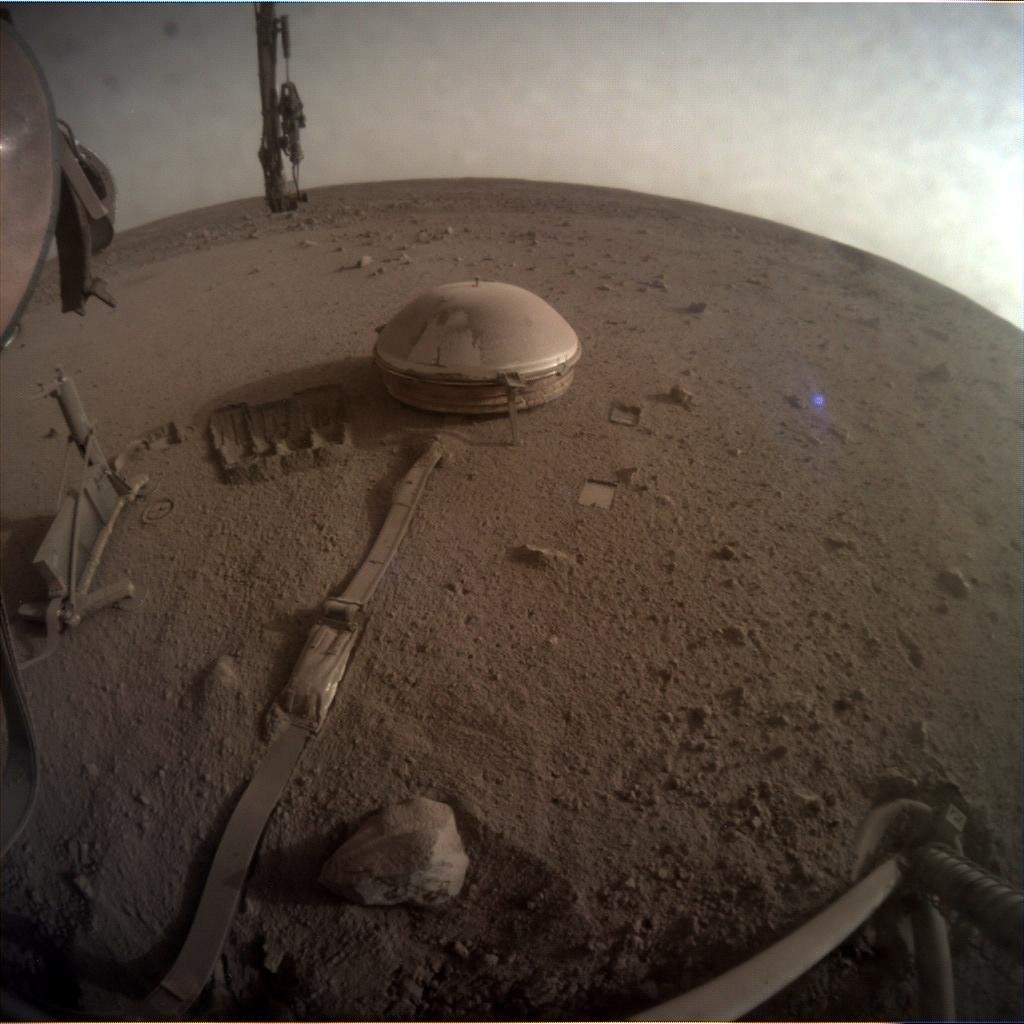
Dust-laden solar panels and darker Martian skies have finally sealed the fate of NASA’s InSight mission, the agency announced Wednesday, after the intrepid lander delivered its final message from Mars at the end of its history-making mission to reveal the secrets of the Red Planet’s interior.
Shared on the NASA InSight Twitter account on Monday, the message, read: “My power’s really low, so this may be the last image I can send. Don’t worry about me though: my time here has been both productive and serene. If I can keep talking to my mission team, I will – but I’ll be signing off here soon. Thanks for staying with me.”
The transmission from the planet’s surface was accompanied by what was one of the final wide-angle photos taken by InSight, showing scientific instruments resting on the surface of Mars.
NASA reported Sunday that InSight had not responded to communications from Earth and its last contact with the lander had been three days earlier. NASA formally declared the InSight mission over Wednesday, after InSight missed another communications opportunity with Earth.
The robotic geologist, armed with a mechanical hammer and seismic quake monitor, first touched down on the barren expanse of Elysium Planitia in November 2018. Its landing site, on a volcanic plain near the equator, was chosen for its flat, featureless landscape, allowing for more accurate seismic measurements to be taken directly from the surface.
InSight (Interior Exploration using Seismic Investigations, Geodesy & Heat Transport) launched on May 5, 2018, from Vandenberg Air Force Base in California and, after a six-month cruise, landed on Mars on November 26 where it immediately began surface operations with science data collection starting 10 weeks later.
Over almost four years, InSight has yielded data about Mars’ interior layers, its liquid core, the surprisingly variable remnants beneath the surface of its mostly extinct magnetic field, weather in the vicinity of its location on Mars, and lots of quake activity.
InSight’s seismometer, provided by France’s Centre National d’Études Spatiales (CNES), has detected more than 1,300 marsquakes, the largest measuring a magnitude 5. It has also recorded quakes from multiple meteoroid impacts and more than 10,000 dust devils.
Observing how the seismic waves from those quakes change as they travel through the planet offers an invaluable glimpse into Mars’ interior but also provides a better understanding of how all rocky worlds, including Earth and its Moon, may form.
Seismic data analysed to date has revealed the Martian crust is drier and more broken up from asteroid impacts than scientists originally thought and has at least two sublayers, wrapped around a large liquid core.
Since a planet’s full history is encoded in its interior layers, InSight’s findings will help researchers revisit scientific models of how rocky planets form and, ultimately, inform the study of worlds beyond our solar system that could host life.
“Finally, we can see Mars as a planet with layers, with different thicknesses, compositions,” said mission principal investigator Bruce Banerdt, based at NASA’s Jet Propulsion Laboratory (JPL) in California. “We’re starting to really tease out the details. Now it’s not just this enigma; it’s actually a living, breathing planet.”
James Green, NASA senior advisor, told Spaceflight Now: “The InSight mission answered many important questions that we just needed to know about as scientists but also in support of future human exploration.
“What is the size of the crust, mantle, and core of Mars? Is Mars a dead world or still an active, living planet? How intense are Mars quakes and will they pose a hazard to human exploration?
“To me one of the biggest surprises was finding out that Mars still have a liquid outer core. Now us scientists have to figure out why?”

Indications that InSight’s mission was finally drawing to a close came when the solar powered lander issued an update in November, reminiscing on its time in space. “I’ve been lucky enough to live on two planets. Four years ago, I arrived safely at the second one, to the delight of my family back on the first. Thanks to my team for sending me on this journey of discovery. Hope I’ve done you proud,” it said.
NASA declared the mission over Wednesday when InSight has missed two consecutive communication sessions with the spacecraft orbiting Mars – part of the Mars Relay Network – but only if the cause of the missed communication is the lander itself. NASA’s Deep Space Network is expected to listen for a while longer, just in case.
Managers at JPL have said there will be no heroic measures to re-establish contact with InSight, but haven’t completely ruled out a mission-saving event such as a strong gust of wind that blows dust off the solar panels, though that is considered unlikely.
A vital final step for the InSight mission is storing its trove of data and making it accessible to researchers around the world. Seismometer readings will join the only other sets of extraterrestrial seismic data, from the Apollo lunar missions and the Viking Mars missions, in NASA’s Planetary Data System.
InSight was manufactured by Lockheed Martin Space Systems with most of its scientific instruments supplied by European agencies. The spacecraft was originally planned for launch in March 2016 but a last minute repair to an instrument problem pushed it beyond the launch window for that year to the next opportunity in 2018 and increased the mission cost from US$675 million to US$830 million.
